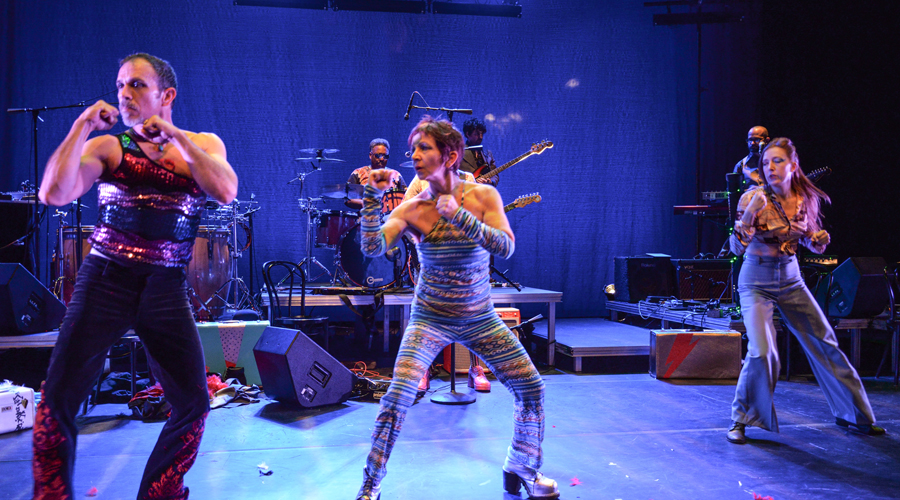Dance Careers: Choreography for a life
WHEN IS IT TOO LATE TO START A DANCE CAREER?
By Kelli McDonald
Rat Race Contributing Writer
“Some would say I started too late—at 23.”
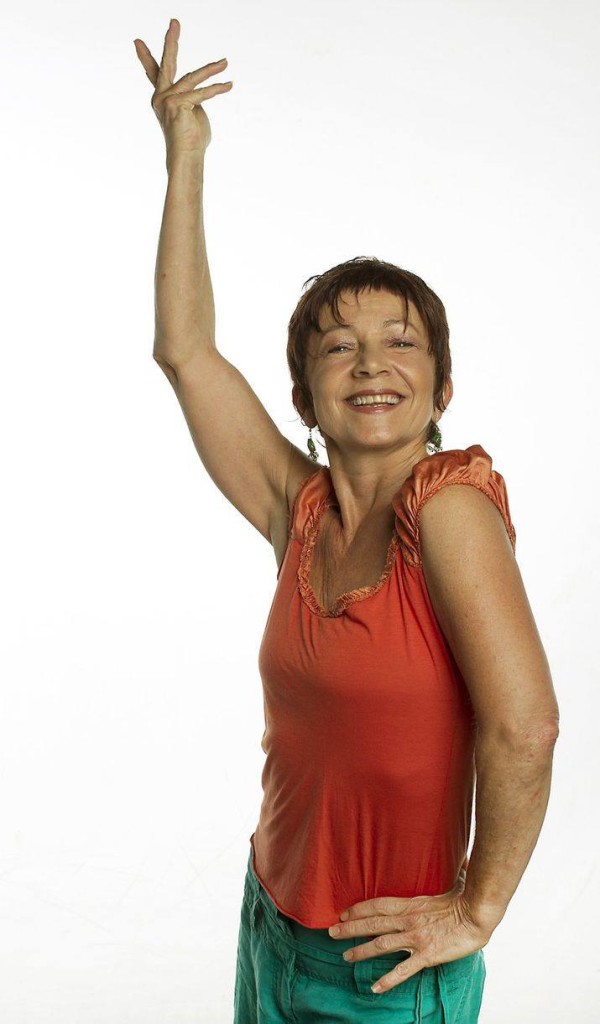
Most professional dancers begin their careers early. Growing up in Waukegan, Illinois, in the 1960s didn’t provide Andrea Ariel with many opportunities to absorb technical dance knowledge. But the dance classes that she took for a brief time as a child gave Ariel a passion for movement and artistic expression. As the eldest of five (with a sixth sibling on the way), Ariel couldn’t expect her parents to spend too much on a child’s passions and hobbies. So she became a cheerleader when money was too tight to continue dance lessons.
Although her dream was put on hold, Ariel’s life kept moving forward. As a young adult, Ariel left Illinois for California where she had a child of her own and took creative movement and music classes at a community college. After she performed a piece based on the rhythms of her breath, Ariel’s teacher told her she should pursue modern dance. At the time, Ariel wasn’t entirely sure what that would entail.
Dance began moving beyond a hobby and into the realm of possibility for a future career, but like many creative people, Ariel lacked faith in her own ambitions. So she made a promise to herself: If three people told her she should keep pursuing dance, without being prompted to say so, she would continue.
And they did. One confirmation came from an audience member who only saw a one-minute performance but felt captivated. Another validation came from a teacher, and the last came from a fan of her choreographic talent. After receiving these endorsements from her peers and admirers, Ariel went to “a school in the redwoods,” the University of California, Santa Cruz, where she met her future husband and obtained a bachelor of arts degree in theater with an emphasis on dance. From there, she received a Creative Performing Arts Fellowship award to attend the more urban environment of the University of Illinois at Urbana-Champaign.
“My asking of the universe ‘should I keep going?’ got answered again in my mind,” Ariel remembered. “In my heart, I knew it meant I should keep doing this.”
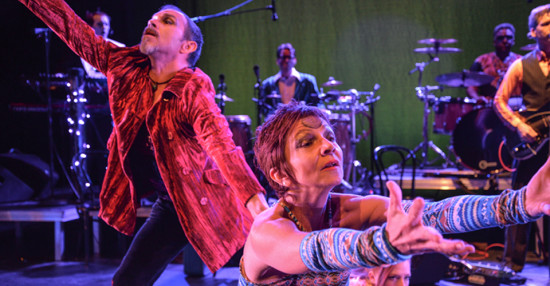
But now that Ariel knew what she was going to do, she still didn’t know how. Timing was still a problem. “When you’re coming up as a dancer, everyone dreams about being a dancer in someone’s company, and I didn’t know if I was going to do that,” she said. “My son was 7, so pursuing a dance career of that sort wasn’t as accessible.” Ariel’s friends and teachers told her that they saw her as a creator as well as a dancer. Fortunately, Ariel had the opportunity to serve as assistant director to guest choreographer Stephen Koester while in Urbana-Champaign. This allowed her to be on the other side of a dance production.
Once graduate school was over in 1988, Ariel and her soon-to-be husband moved to San Marcos, Texas, to be near his family. She quickly became involved in the dance scene in nearby Austin, where she and her family still live today. At the time, Austin was home to a small but dedicated group of modern and experimental dancers. “Living that whole laid back, ‘keep Austin weird’ life was still prevalent,” Ariel said. “It was almost a little too quiet for me at the time.”
STARTING A DANCE STUDIO
But Austin grew along with Ariel’s career. She developed show after show and built a performance space of her own that she used for two years. The location was the site of an old car dealership with a showroom that just happened to be perfect for a performance group. This is where she presented her multimedia projects, which were influenced by the work of George Coates, the noted San Francisco-based theater director. “There was a spark where I knew that was the kind of work I wanted to make,” Ariel remembered. “[George] was very multidisciplinary. I loved the combination of live music, dance and movement.”
To continue growing as a dancer, choreographer and creative director in Austin, Ariel knew she needed as much experience as she could collect. “It was mostly me. I took it all on,” Ariel said. “I hired collaborators, but in terms of running the company, I kind of did it all . . . I can’t say it wasn’t a struggle.” She said “yes” to every opportunity and found herself choreographing eclectic outlets like commercials, hair shows, opera, festivals and films like Waiting For Guffman.
But even though Ariel worked relentlessly on her company and her career, she also engaged in the community. While balancing teaching jobs at Austin Community College and the University of Texas, Ariel developed an after-school program for children living in housing projects. She also founded the “Self-Portrait Project,” a program that encouraged women in recovery from alcohol and drug addiction to write, dance and paint while rebuilding their lives.
INSIDE THE CREATIVE PROCESS
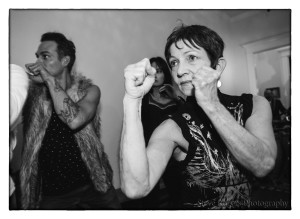
Ariel’s process begins when something “sparks an investigation.” An example: When Ariel learned that the world uses 1 million plastic bags in a minute, that led, in a roundabout way, to a multimedia performance called “The Gyre Project.” Curious about where all that waste goes, Ariel began researching the Great Pacific Garbage Patch. This floating collection of debris, estimated to be the size of Texas or larger, is kept trapped within the North Pacific Gyre (a huge system of spinning ocean currents). Fascinated by the massive amounts of trash floating in the water, Ariel dove into ideas on how to make the content significant to the audience: “So what is meaningful about this?” she asked herself. “Perhaps it relates to how we throw things away—’out of sight out of mind.’ And the trash we hold inside of us, what we push down.” This resulted in a multimedia show with video projections and a small group of dancers who became trapped in the North Pacific Gyre. In order to escape, they had to deal with their “internal trash.”
Sometimes the “bones” of a show come to Ariel quickly, and other times it can be a lengthy process to get the first minute of choreography established: “I always have to meet myself in the studio,” she said. “I have to meet my body and clear my mind. I also dream and imagine a lot and begin to see images and patterns that emerge. Mostly [this happens] as I go to sleep or wake up.”
HOW TO START A DANCE CAREER
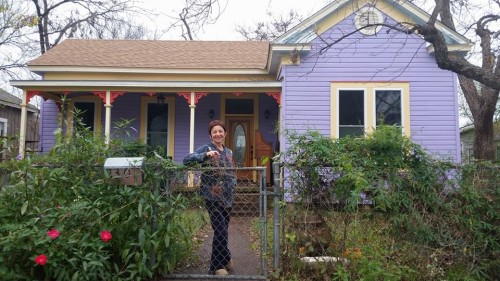
When asked for advice for those pursuing dance, Ariel thought very carefully. “You have to really, really want it because it’s not an easy path,” she said. “A dancer’s life is hard. It takes a lot of discipline and dedication. You need the drive, passion, and to love it so much you can’t not do it.” Ariel emphasized the amount of effort and time that goes into building a dance career. “You have to show up for yourself,” she said. “You have to show up in the studio and pursue community and networks in dance, and develop those kinds of connections and be involved.”
Maintaining a successful creative career involves being both a dreamer and businessperson. “That’s the thing I find the hardest, the division between the creative person and the business side,” Ariel said. “And you have to make a distinction and decide if you want to be an individual artist or a non-profit organization.” In 1997, Andrea Ariel Dance Theatre became a 501(c)(3).
Ariel recommends making a schedule after figuring out what would make one’s artistic output the strongest. “I’m useless if I go to the studio after being on the computer,” Ariel said, laughing. So she starts her mornings with dance and creation.
Teaching can be immensely helpful in making it possible to support oneself financially, but Ariel advises new dancers to be careful about doing anything that divides their focus.”Remember, that [teaching] takes up a lot of energy, so look for other opportunities too,” she said. “But, of course, dancing does give you joy, and it gives back to you.”
NOW AND NEXT
Currently, Austin is experiencing “a location crisis for performances” as many small theaters are reluctantly closing their doors due to increasing property prices. Ariel recently debuted her newest piece, “Lumen,” in Austin, but she also aims to expand her reach outside of the city. While reflecting on her career, Ariel wants to appreciate where she’s been but also push the vision of what she can become across the United States and even the world.
Soon, Ariel will construct traveling and local programs for a process called “Soundpainting.” Soundpainting was developed by Walter Thompson (who taught Ariel) and refers to “a sign language used to weave a multidisciplinary group in improvisation. Soundpainting is sculpting and composing live with the improvisations from the performers.” In this project she will conduct dancers, actors and visual artists in creating a performance by manipulating sound and movement through techniques like pitch, pointillism and volume.
Ariel’s future plans of expansion and experimental improvisation reflect her the themes of her long career. She still “does it all,” but she recognizes when to ask for help and how to pay attention to her body’s capabilities without running herself down. For more than 25 years, Andrea Ariel has taken chances and propelled herself forward by engaging the community and believing others when they confirmed what she must have known all along: It’s possible to chase one’s passion at any time in one’s own unique way.
